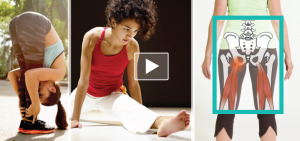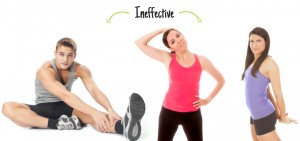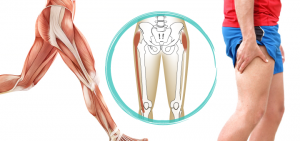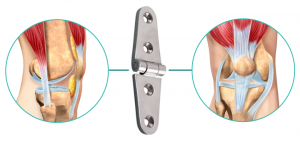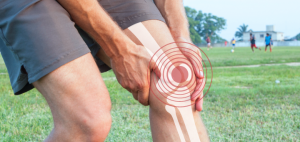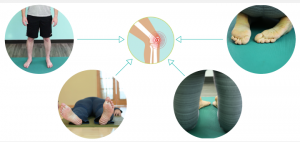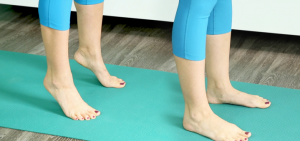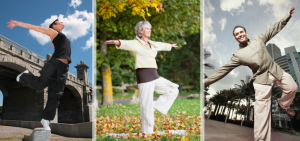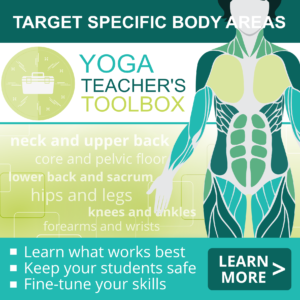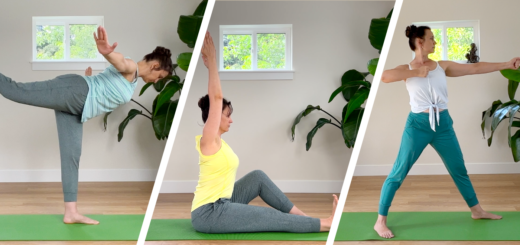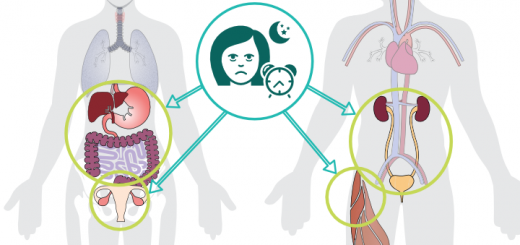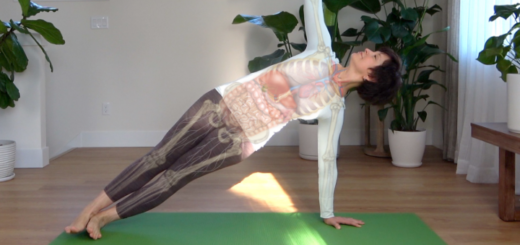
Whenever you plan to work with legs, knees and ankles in your yoga class or private yoga session, it helps to remember the following points:
- It is important to differentiate between chronically tight hamstrings and injured hamstring tendon (which usually manifests as pain in the crease of the buttock). When the tendon becomes injured, the hamstring muscles naturally contract, trying to prevent further damage. In this situation actively stretching your hamstrings can reinjure the tendon. Instead it needs to heal. This means that you need to start with contracting the hamstrings to increase circulation to the area, bending the knees generously in the forward bends, and engaging in very mild stretching, if any. Once the acute phase had passed, you can begin to add gradual stretching.
- Some common warmup stretches for hamstrings, quads and calves are not effective because they are static. If you make those movements dynamic they will become much more effective for muscular performance and injury prevention.
- The feeling of tightness in IT band is often a consequence of chronically contracted TFL muscles and weak Gluteus medium. This means that the tight ropey feeling on the side of the leg is best addressed by strengthening the muscles that abduct and internally rotate the leg.
- Your knee often ends up on the receiving end of what’s happening above (hip joint) and below (ankle). If your hips are tight and not willing to rotate (which is required in poses like Pigeon and Lotus), your knee will try to help and rotate as well, which can lead to injury.
- The bony protrusions between the top leg bone (femur) and bottom leg bone (tibia) fit perfectly together only when the leg is perfectly straight. But when you bend the knee, the way they slide against each other changes constantly and depends on positioning of those bones. This means that in weight-bearing positions we need to be careful and precise with knee alignment. In non- (and partial) weight-bearing positions we can work with the knees by keeping them bent and repositioning the feet (placing them together, hip distance and wide apart) to keep your cartilage healthy and properly lubricated.
- Working on balanced development between the muscles that support the knee (quadriceps, hamstrings, TFL and hip rotators) is essential for preventing and healing knee injuries.
- Tracking is the most informative visual cue we can use in working with knees. Tracking is a relative position between the hip joints, knee joints and ankles and is the result of both musculoskeletal conditions and movement patterns.
- Lifting up on the balls of the feet in simple poses like Tadasana immediately changes the base of support, making it smaller. It is very useful for training balance and strengthening ankles, feet and calves.
Sequence Wiz blog posts about legs, knees and ankles
Nurse your hamstrings back to health
Often in yoga classes we stretch, pull and tug on our hamstrings mercilessly, which can lead to hamstring injury. And often in our efforts to heal our injured hamstrings (by stretching them), we end up re-injuring them again. This sort of cycle can go on for a very lo-o-ong time. Let’s stop the madness! Read more >
6 yoga substitutes for the most common gym pre-exercise stretches
With these easy changes you can transform ineffective static stretching into more effective dynamic stretching that helps with muscular performance and injury prevention. Anybody can do those and get the maximum benefit without compromising the safety. Read more >
IT band stretching and rolling won’t relieve the tension
The Iliotibial (IT) band is a thick band of fascia that runs on the side of your leg from the hip to just below the knee. If you are an active individual who runs or plays sports, at some point you’ve probably experienced some tightness on the side of your leg or full-blown lateral knee pain (called ITB syndrome). Two common solutions that are recommended for the IT band tightness are IT band stretching and IT band rolling (applying pressure over the foam roller). Yet neither of these might be a good solution for you. Why is that? Read more >
The knee joint – much more then a simple hinge (and why it matters)
According to joints classification, knee is a “hinge joint” that folds and unfolds like a hinge. Indeed, life would be so much easier for many of us if it was a simple hinge – we would probably have much fewer knee problems. A simple hinge would be stable and predictable, moving only one way (fold-unfold) and keeping the top part perfectly aligned over the bottom part. Well, Mother Nature in her infinite wisdom made it a bit more complicated to broaden our movement potential (which came at the expense of stability). Here is what it means for your yoga practice. Read more >
What causes front knee pain and what can we do about it?
The characteristic grinding noise you might hear from the knees on movement is called “crepitus”and can potentially point to a condition called Patellofemoral syndrome (PFS). Symptoms of PFS include pain at the front of the knee, feeling stiffness in the knees after long immobility, difficulty walking down stairs, and this loud noise. Sometimes people report a feeling of “buckling” in the knees as if parts of the knee slip past each other instead of fitting closely together. Why does this happen? Read more >
How to work with knees in yoga
When a student comes to you complaining of knee pain, the first thing you need to do is assess tracking. Tracking is a relative position between the hip joints, knee joints and ankles and is the result of both musculoskeletal conditions and movement patterns. Tracking is the most informative visual cue that we can use in working with knees, as knees usually end up on the receiving end of what’s going on above them (hips) and below them (ankles and feet). Read more >
Mighty Tadasana: How to use Mountain pose to train your balance and strengthen your hips and ankles
The classic version of Mountain pose is as stable as any standing pose gets, but if we change the form of the pose a bit, we can successfully use it to both train your balance AND strengthen the muscles that are directly involved in maintaining balance during standing and walking. Lifting up on the balls of the feel immediately changes the base of support, making it smaller. Balancing becomes harder, while ankles, feet and calves become stronger. There are several ways we can work with this action. Read more >
Six easy balancing moves for your daily routine
Our daily lives are full of opportunities for balance training. Waiting in line at a grocery store? Go up and down on the balls of the feet while using your grocery cart to steady yourself if necessary. Riding in an elevator? Lift one foot slightly and practice balancing on one leg as the elevator moves. You can try balancing on your toes or one foot any time – while you cook, brush your teeth, watch TV – and it will help improve your balance. Read more >
Sample yoga practices
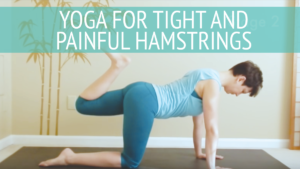 |
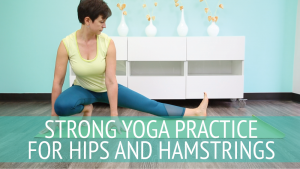 |
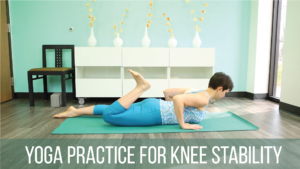 |
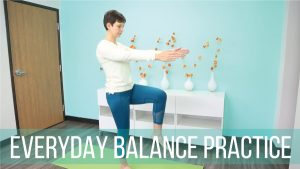 |
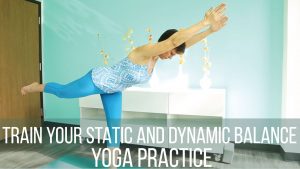 |
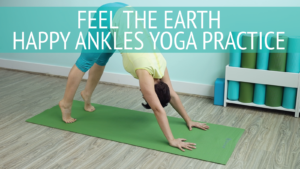 |
Featured Hamstring Favorites from the sequence builder
When you use Sequence Wiz yoga sequence builder, you can choose a body area and get suggestions on poses that work best to address it. Each option includes poses, reasons for using them and movement instructions. You can easily add those poses to your sequence. Give it a try >
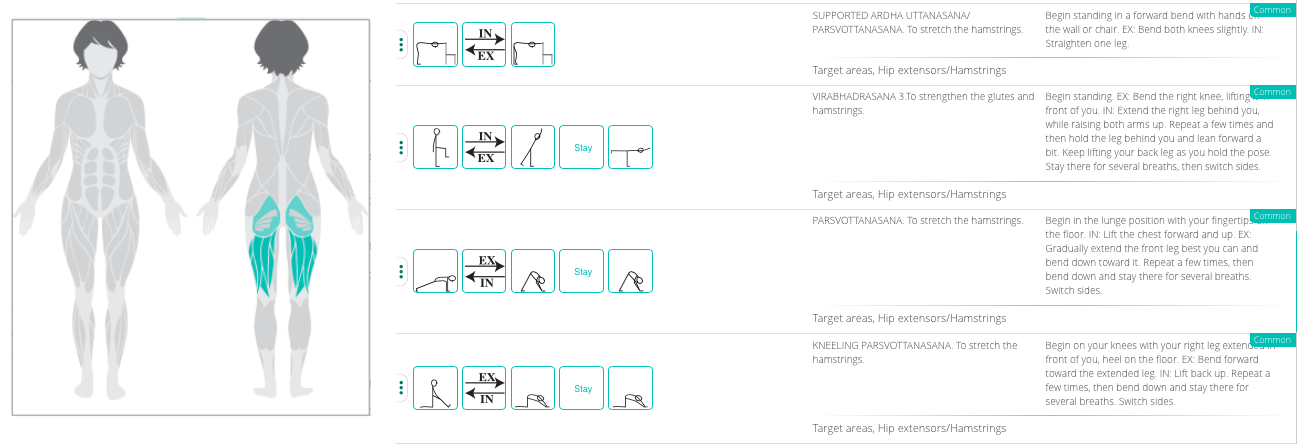
As yoga teachers, we want to help our students feel better in their bodies. This means that often we need to work with specific areas of tension and imbalance. What does it take to create an effective practice to release tension and increase range of motion in a particular part of the body? Some principles are universal, and some are unique to the target area. Here are some ideas on how you can approach it in your yoga classes, as well as some safety precautions that we need to consider. Check it out >
[jetpack_subscription_form]

